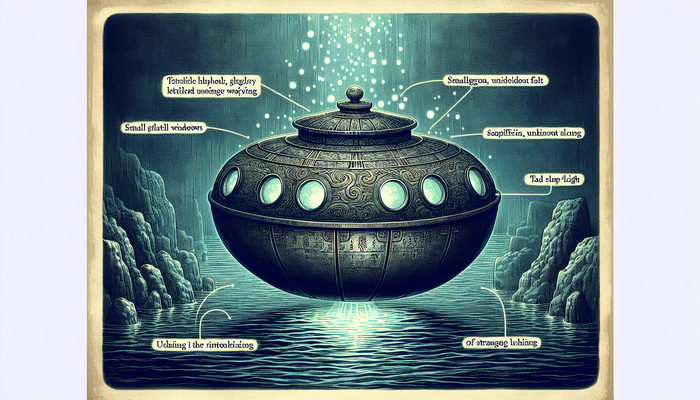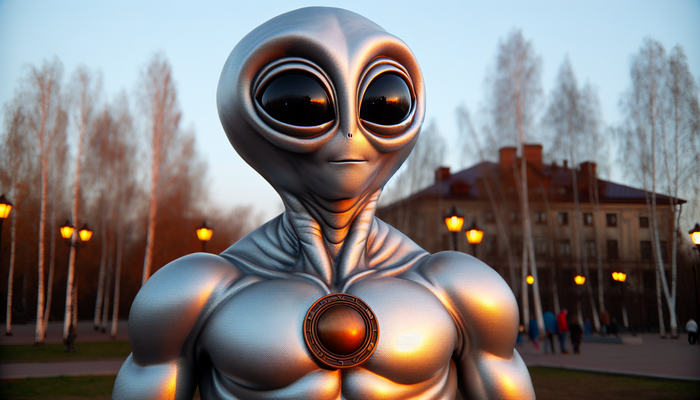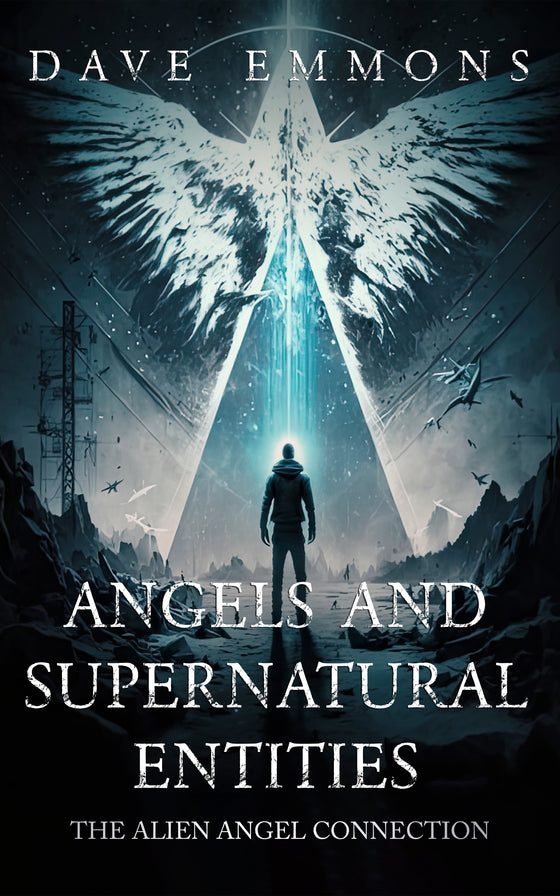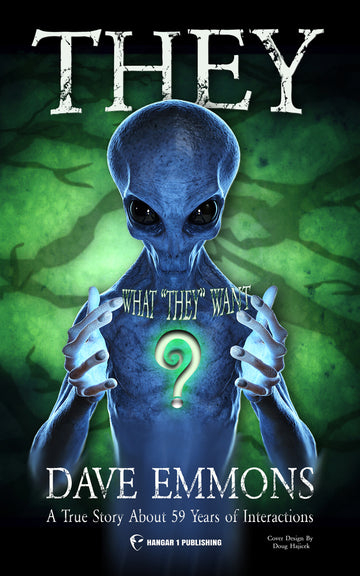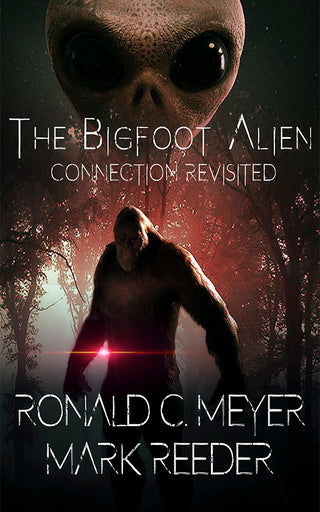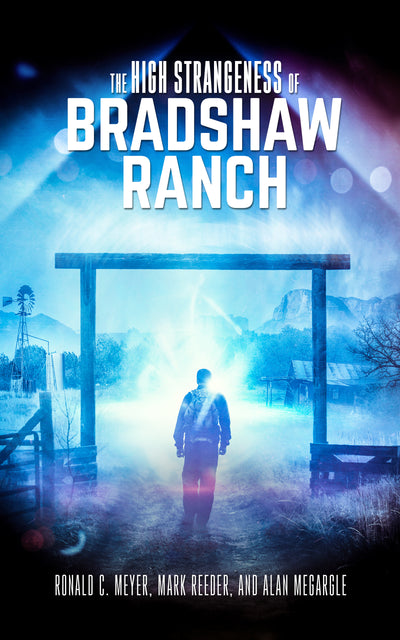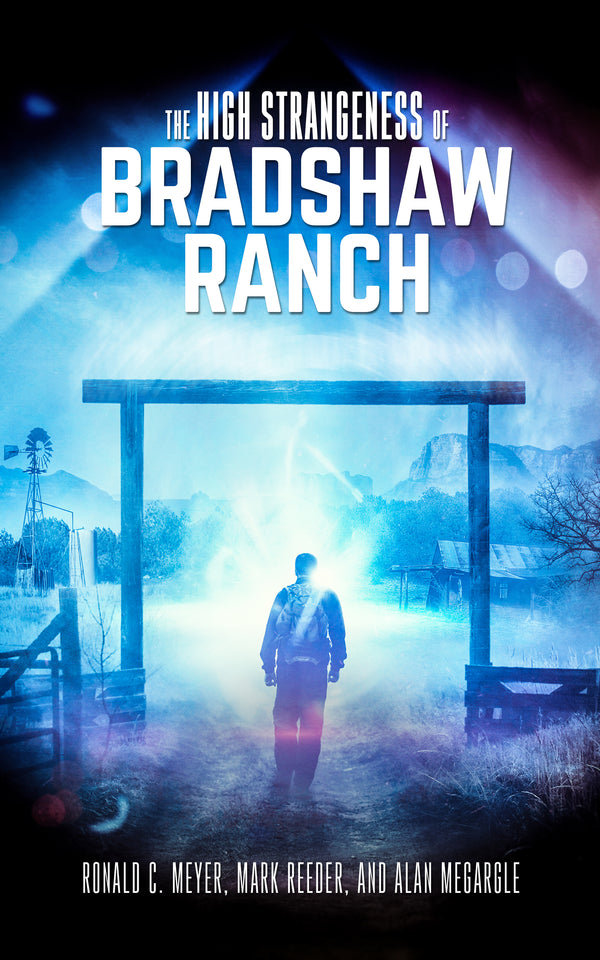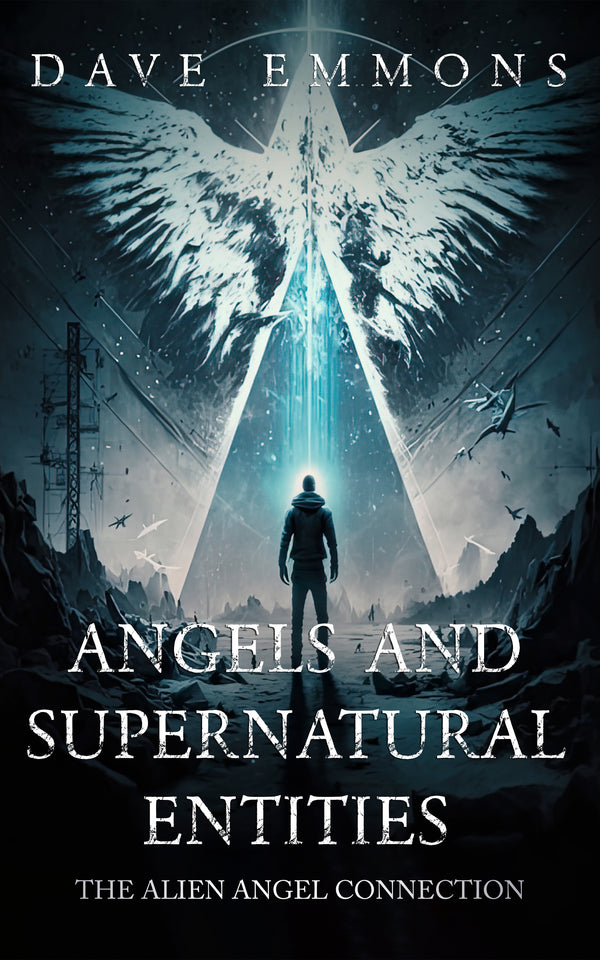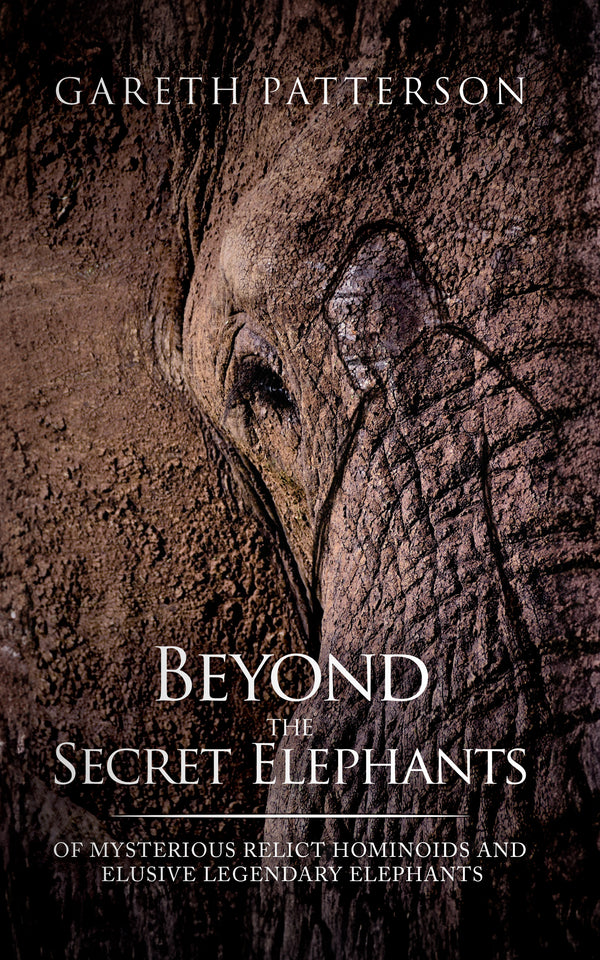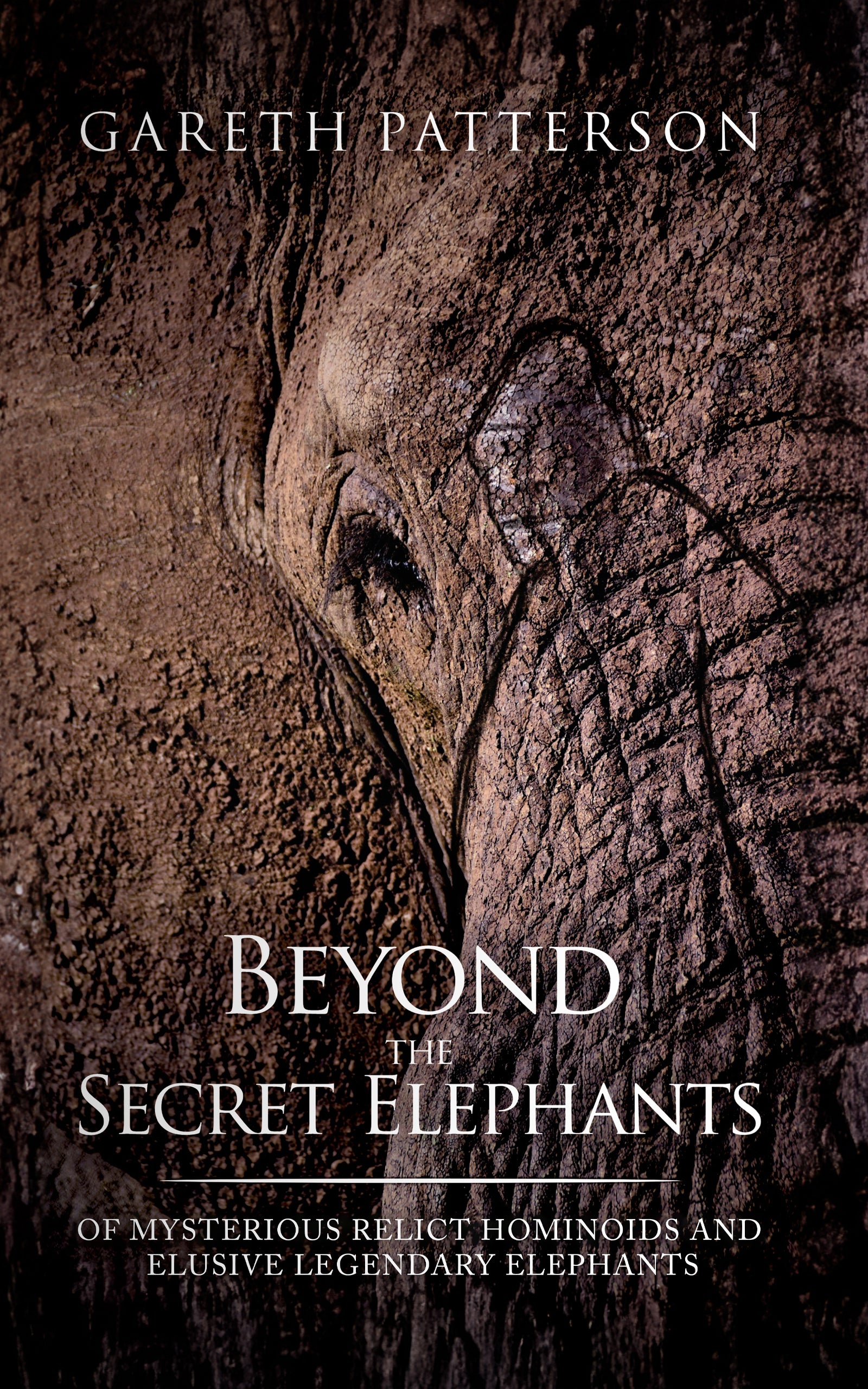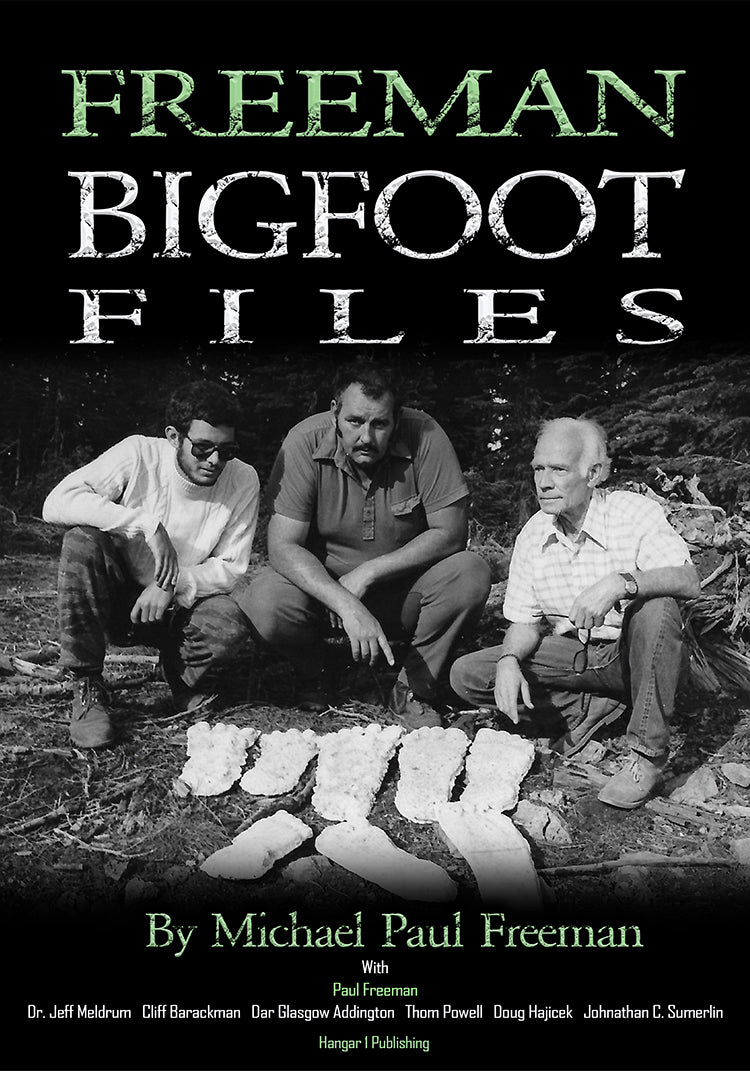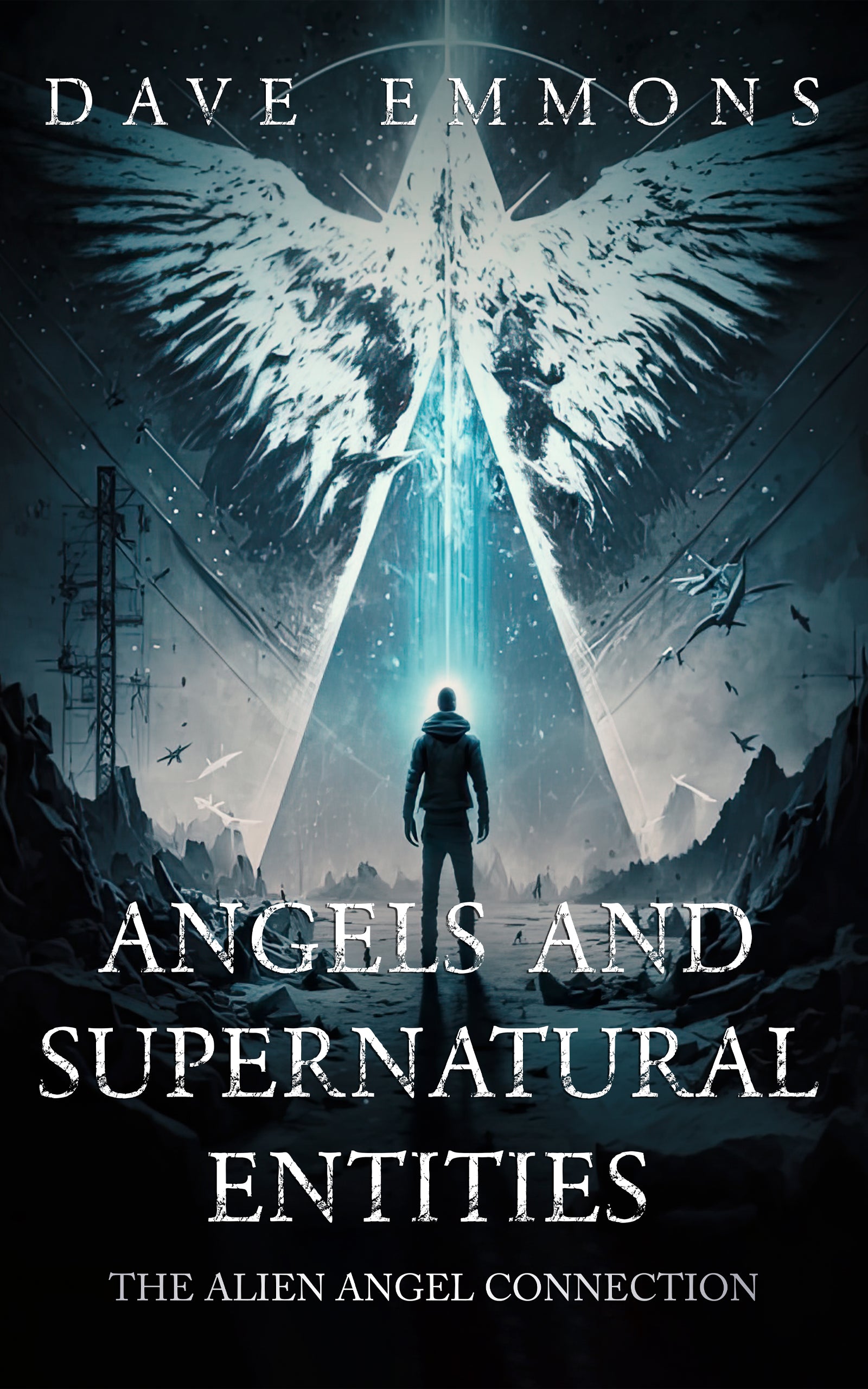Hidden Alien Civilizations Are Already Here

By Elaine Westfield, Ufologist
Introduction: The Unsettling Silence - Or Is It?
The universe stretches out before us, an ocean of time and space so vast it beggars belief. Billions upon billions of stars, many cradling planets within zones that could, theoretically, support life as we know it. We've spent decades listening intently, scanning the heavens, hoping for a whisper, a signal, any sign that we're not alone on this cosmic stage. Yet, what we've largely received is an unnerving silence. This profound quiet, this apparent emptiness in the face of overwhelming probability, is the heart of the Fermi Paradox. It’s a question that echoes in the void: If the conditions for life are likely widespread, where is everybody?
But perhaps the silence isn't emptiness. Perhaps it's a curtain. What if the answer to Enrico Fermi’s lunchtime puzzle isn't found by peering deeper into the cosmos, but by looking closer at our own world, maybe even glancing over our shoulders? Could it be that the reason we haven't found extraterrestrial civilizations out there is because they are, in some fashion, already here, hidden from our view, operating in the shadows of our own reality?
This isn't just the stuff of late-night radio shows or grainy photographs anymore. The questions surrounding hidden alien civilizations are becoming subjects of serious, albeit speculative, consideration, prompting us to explore possibilities that push the boundaries of conventional thought. We're embarking on a journey into these shadows, examining theories that range from the cosmically cautious to the terrestrially startling. We’ll explore the chilling logic that might compel advanced species to hide, the tantalizing hints of non-human intelligence concealed beneath our feet or waves, the echoes of potential intervention in our ancient past, the icy enigmas of Antarctica, and even the whispers of secret alliances forged in the face of an otherworldly presence. Prepare to question the very nature of "alien" and consider a reality far more complex and interwoven than we ever imagined.
The Cosmic Hiding Game: The Dark Forest and the Price of Visibility
Let's first revisit the scale of Fermi's question. Our own Milky Way galaxy boasts somewhere between 100 and 400 billion stars. Current estimates suggest potentially billions of planets reside in the "habitable zones" of these stars, where conditions might allow liquid water to exist. Even if life arises on a minuscule fraction of these worlds, and intelligence on a fraction of those, the galaxy should logically be teeming with activity. As the SETI Institute aptly puts it, any civilization with "a modest amount of rocket technology and an immodest amount of imperial incentive" could colonize the galaxy in a few tens of millions of years – a cosmic blink compared to the galaxy's roughly 13-billion-year age. So, the silence is indeed profound.
One of the most chilling, and elegantly disturbing, proposed solutions comes not from astrophysics, but from science fiction: Cixin Liu's concept of the "Dark Forest." Imagine the universe not as an empty expanse, but as a pitch-black forest at night. Every civilization is an armed hunter, stalking silently, desperately trying not to make a sound. Why? Because in this forest, drawing attention to yourself is potentially suicidal. Revealing your location might attract predators far more advanced and ruthless. The core tenets are stark:
- Survival is the primary need of civilization.
- Civilization continuously grows and expands, but the total matter in the universe remains constant.
- Differential technological progress is inevitable. A slower civilization can never be sure of the intentions of a faster one, and the faster one always holds the potential to annihilate the slower.
This leads to a terrifying conclusion: the safest course of action upon detecting another civilization is pre-emptive destruction. You can't know their intentions, you can't risk them surpassing you technologically, so silence is golden, and attack is the ultimate defense. In Liu's grim universe, "hell is other people," or rather, other civilizations.
However compelling this cosmic horror story may be, it likely doesn't perfectly map onto our reality. As pointed out in The Conversation, the Dark Forest analogy misinterprets how ecosystems, even competitive ones, actually function. Charles Darwin observed co-evolution and interdependence. Earth's forests aren't silent killing grounds; they are noisy places brimming with communication, symbiosis, and complex relationships. Parasites rely on hosts, flowers need pollinators, intricate food webs connect every living thing. It seems statistically improbable, as astrophysicist Moiya McTier notes, that every single alien civilization across the vastness of space and time would independently converge on the exact same strategy of paranoid silence and aggression. We see immense diversity in behavior even within our single species on Earth; why assume cosmic uniformity? A curious, benevolent, or simply indifferent civilization could easily break the silence. Furthermore, the sheer, almost incomprehensible distances between star systems might act as a natural buffer, lessening the perceived immediacy of threat or the pressure of resource competition that drives the Dark Forest's pre-emptive logic.
Despite its likely inaccuracy as a universal law, the fear embodied by the Dark Forest theory resonates. It has shifted some scientific discussions from pure curiosity towards acknowledging the potential risks of contact. Prominent astrobiologists like Kelly Smith and John Traphagan proposed a protocol for first contact that begins: "First, do nothing." Doing something – returning a message, revealing our location or capabilities – could inadvertently invite disaster. It’s a sobering reminder that while we hope for cosmic camaraderie, prudence dictates preparing for the possibility, however remote, that the silence isn't empty, but watchful. This leads us to wonder, if they aren't just hiding out there, could they be hiding somewhere much closer?
The Cryptoterrestrial Hypothesis: Are Hidden Civilizations Already Among Us?
What if the search for extraterrestrial intelligence isn't about telescopes aimed at distant stars, but about exploring the uncharted territories of our own planet? This is the provocative core of the "Cryptoterrestrial Hypothesis" (CTH), gaining traction in some academic circles, notably explored in a recent paper by researchers from Harvard and the University of Montana. The central idea? That non-human intelligences aren't just visiting; they might be residing here, concealed in plain sight, perhaps for millennia.
The CTH isn't a single, monolithic theory, but rather a spectrum of possibilities for who these hidden entities might be:
- Ancient Human Holdovers: Could highly advanced human civilizations have existed long before our recorded history, surviving cataclysms by retreating into hiding? Think technologically advanced Atlanteans, dwelling beneath the waves or deep underground.
- Undiscovered Hominids: Is it possible that other intelligent species, related to humans but following a different evolutionary path, developed alongside us and mastered the art of concealment?
- Hidden Extraterrestrial Enclaves: Perhaps aliens did arrive from the stars, but instead of announcing themselves, they established secret bases on Earth – underground, beneath the oceans, or in remote, inaccessible locations.
- "Magical" or More Esoteric Beings: This category acknowledges phenomena that observers might describe in terms that border on the supernatural, potentially representing forms of intelligence or reality we simply don't comprehend.
While acknowledging the CTH remains highly speculative due to the lack of definitive proof – a "smoking gun" – proponents argue it warrants serious consideration. They point to intriguing, circumstantial lines of reasoning. Gaps in our fossil and archaeological records, while often filled by new discoveries, still leave room for surprises about Earth's deep past. More compellingly, folklore and mythology from nearly every culture on Earth contain remarkably consistent stories of interactions with non-human beings dwelling underground ('little people', 'elves', 'djinn') or emerging from water ('merfolk', 'kappas'). Could these be distorted folk memories of encounters with genuine cryptoterrestrials?
Then there's the truly baffling nature of some Unidentified Anomalous Phenomena (UAP) reports. The characteristics described in well-documented encounters – objects performing instantaneous acceleration far beyond known aircraft, seamlessly transitioning between air and water (trans-medium travel), and appearing to defy gravity – strain the limits of our current physics. The CTH suggests these might not be visitors performing incredible interstellar feats, but craft operating from hidden bases right here on Earth. Sightings of UAPs entering or exiting volcanoes, oceans, lakes, or remote mountainous regions lend credence to the idea of bases hidden in places humans rarely tread.
Naturally, skepticism is warranted. Myth interpretation is subjective, and UAPs could potentially be explained by advanced, classified human technology wielded by foreign adversaries, misidentification, or natural phenomena we don't fully understand. Yet, the CTH offers a potential framework that neatly sidesteps the immense challenges of interstellar travel – the vast distances, the energy requirements, the time dilation paradoxes. It also might explain the often-reported (though highly debatable) physiological similarities between alleged alien abductors and humans, which seem less probable if they evolved light-years away. As the authors of the Harvard paper suggest, while an Earth-based explanation might seem far-fetched, it deserves a place at the table as we grapple with the UAP enigma. Perhaps the truth isn't quite so "out there" after all, but hidden just beneath the surface of our world.
Ancient Echoes: Tracing Hidden Alien Influence in Human History (A Critical Examination)
Hand-in-hand with the idea of hidden presences today is the enduring, popular, yet scientifically contentious theory of "Ancient Astronauts." This concept suggests that Earth wasn't just visited in the past, but that extraterrestrial beings actively shaped human civilization, technology, religion, and perhaps even our biology. Proponents argue that the gods of antiquity – from the Sumerian Anunnaki to the Egyptian pantheon – were, in fact, flesh-and-blood aliens whose advanced technologies were mistaken for divine power. Arthur C. Clarke's famous adage, "Any sufficiently advanced technology is indistinguishable from magic," becomes a core tenet here.
The "evidence" presented by ancient astronaut theorists often involves reinterpreting historical and archaeological data through an extraterrestrial lens:
- Monumental Mysteries: Structures like the pyramids of Giza and Mesoamerica, Stonehenge, the Moai of Easter Island, the Nazca Lines, and sites like Pumapunku are claimed to be beyond the capabilities of ancient peoples, requiring alien knowledge or direct intervention. They point to the massive scale, precision engineering, and logistical challenges of moving enormous stones.
- Anachronistic Artifacts: Objects dubbed "out-of-place artifacts" (OOPArts), like the Saqqara Bird (interpreted as a glider) or the Quimbaya artifacts (seen as resembling modern aircraft), are cited as proof of forgotten advanced technology.
- Artistic Interpretations: Ancient artwork is scrutinized for perceived depictions of alien beings or technology. Petroglyphs in Val Camonica, Italy, or Australian Wondjina figures are said to resemble helmeted astronauts. Hopi Kachina figures are linked to "star people." Global motifs of "birdmen" (found in Peru, Bolivia, Easter Island, Japan, Sumeria) are interpreted as depictions of flying visitors, perhaps the Anunnaki themselves. Even figures in Medieval and Renaissance paintings, often explained by art historians through religious symbolism (like radiant clouds or vortices of angels), are sometimes claimed to be UFOs.
- Sacred Texts as ET Logs: Religious scriptures are read not as metaphor or myth, but as literal accounts of alien encounters. Zecharia Sitchin famously interpreted Sumerian texts as detailing the arrival of the Anunnaki from a planet Nibiru, seeking gold and creating humans (Adapa/Adam) as slave labour. The Book of Enoch and Genesis's tales of the "sons of God" (Watchers) descending, mating with human women to produce giant Nephilim offspring, and teaching forbidden knowledge (metallurgy, astronomy) are presented as historical records of alien interaction and hybridization. Ezekiel's vivid vision of wheels within wheels and fiery chariots is frequently interpreted as a detailed description of a spacecraft landing, a hypothesis popularized by figures like Erich von Däniken and Josef F. Blumrich. The flying Vimanas in Hindu epics like the Ramayana are similarly presented as ancient aerial or space vehicles.
It is crucial, however, to underscore that the ancient astronaut hypothesis resides firmly outside the boundaries of mainstream science and archaeology. Academics overwhelmingly dismiss these claims as pseudoscience or pseudoarchaeology. They argue, with substantial evidence, that proponents often distort facts, misinterpret data, and ignore simpler, well-supported conventional explanations. The development of pyramid construction, for instance, shows a clear evolutionary path from mastabas to stepped pyramids to the true pyramids of Giza, with recent finds like the logbook of Merer detailing the human logistics involved. Experiments have repeatedly demonstrated how ancient peoples, using ingenuity and known techniques like levers, rollers, ramps, and coordinated manpower, could have moved and erected massive stones. Creating the Nazca lines required careful planning and ground-level execution, not aerial direction. Carl Sagan, a prominent voice for scientific skepticism while remaining open to the possibility of extraterrestrial life, famously critiqued the ancient astronaut litany, noting that most cases had "perfectly reasonable alternative explanations" or were based on misreporting and hoaxes.
Furthermore, a significant and troubling aspect of some ancient astronaut narratives, particularly highlighted by critics like Sarah Bond and the Southern Poverty Law Center, involves racist undertones. Attributing the monumental achievements of non-European civilizations (like those in Egypt, Mesoamerica, or South America) to alien intervention implicitly diminishes the capabilities and ingenuity of those indigenous peoples. While some, like Dakota/Lakota writer Ruth H. Burns, counter that alien origin stories can align with indigenous traditions of "star-people" ancestors, the frequent portrayal of ancient astronauts by proponents like von Däniken as light-skinned or "Aryan" has drawn associations with white supremacist ideologies.
Despite its firm rejection by the scientific community, the ancient astronaut theory undeniably taps into a deep-seated human fascination with our origins and the possibility of cosmic connection. Its influence on popular culture, through books, television series like Ancient Aliens, and films, remains significant, demonstrating a persistent desire for grand, extraordinary explanations for the mysteries of the past, even when those explanations stray far from verifiable fact.
The Antarctic Enigma: A Hidden Civilization Under the Ice?
Of all the potential hiding places on Earth, none captures the imagination quite like Antarctica. This vast, frozen continent, shrouded in ice miles thick and subjected to unimaginable cold, remains one of the least explored places on our planet. It’s a realm of profound mystery, and recent scientific anomalies and persistent rumors suggest it might conceal secrets far stranger than just its unique geology. Could Antarctica be harboring a hidden civilization, perhaps one with extraterrestrial origins, beneath its icy mantle?
The speculation isn't entirely unfounded. In 2018, scientists working with the ANITA (Antarctic Impulsive Transient Antenna) experiment detected high-energy cosmic rays that weren't raining down from space, as expected, but appeared to be erupting up out of the ice. This bizarre phenomenon defied the known laws of physics and led physicists like Michio Kaku to wonder what kind of particle or process could be responsible, originating from deep within the Earth or beneath the ice sheet.
Adding fuel to the fire are intriguing satellite images shared online. One purports to show a large, seemingly artificial, cave-like entrance carved into a remote mountain range – perfectly proportioned, some argue, for specific types of craft. Another set of images, from the Antarctic island of South Georgia, reveals what looks like a large, oblong object that has seemingly crash-landed and skidded across the ice, leaving distinct tracks. Some ancient astronaut theorists, like David Childress, noted its resemblance to the mysterious interstellar object 'Oumuamua, speculating it might be a downed spacecraft. While natural explanations like unusual rock formations or glacial calving are possible, these images feed the narrative of hidden activity.
Perhaps more compelling are the firsthand accounts from military personnel stationed there. Investigative journalist Linda Moulton Howe has interviewed whistleblowers, like a former Navy flight engineer identified as "Brian," who described repeated sightings of unidentified disc-shaped objects performing incredible maneuvers over the Transantarctic Mountains. He also recounted a harrowing mission where his crew was ordered to fly over a restricted "no-fly zone" near the South Pole, designated merely as an "air sampling station." Instead of a station, they observed a massive, inexplicable hole or indentation in the otherwise flat polar plateau, appearing like a ramp descending into the ice. The crew was later reprimanded for the flyover and ordered never to speak of it. Around the same time, a team of scientists stationed in remote Marie Byrd Land went missing for over a week – an impossible duration to survive the elements. When Brian’s crew was sent to retrieve them, the scientists ran onto the plane in visible terror, refusing to speak about their ordeal, and were immediately flown out of Antarctica under unusual circumstances. The scuttlebutt among personnel hinted at alien abduction or encounters with unknown entities.
While these accounts remain anecdotal, the possibility of habitable spaces beneath the ice is scientifically plausible. Researchers have discovered vast networks of interconnected ice caverns near active volcanoes like Mount Erebus. Warmed by geothermal heat, some of these subterranean spaces boast surprisingly temperate conditions, potentially reaching a balmy 70 degrees Fahrenheit – large enough and warm enough to support life, or perhaps, a hidden base. As researcher Michael Salla points out, these discoveries lend a veneer of possibility to long-standing rumors.
These rumors often intertwine with fringe historical narratives. There's the persistent story of a secret Nazi expedition to Antarctica (Neuschwabenland) before World War II, allegedly guided by mystics associated with the Thule Society who believed ancient extraterrestrial bases and technologies lay hidden there. Some tales claim German U-boats found underwater passages leading to these warm caverns. Following the war, the massive US military expedition Operation Highjump, led by the decorated Admiral Richard Byrd, supposedly encountered hostile forces. Byrd himself reportedly spoke of a new enemy capable of flying "from Pole to Pole at incredible speed," with some accounts describing battles with flying saucers emerging from the water. Decades later, a satellite image captured what looked like a contrail stretching the entire 12,000 miles from the North to the South Pole, requiring speeds potentially exceeding Mach 10 – seemingly corroborating Byrd's fantastic claim.
Adding another layer is the enigmatic Piri Reis map from 1513, which accurately depicts the coastline of Antarctica, but without its ice cover, centuries before the continent was officially discovered. Piri Reis claimed his map compiled information from far older sources. This led historian Charles Hapgood to propose his controversial theory of "Earth crust displacement" – that around 12,000 years ago, the Earth's crust rapidly shifted, moving Antarctica from a temperate zone to its current polar location and flash-freezing whatever existed there. Could this ancient, ice-free Antarctica have been home to a civilization, perhaps Plato's lost Atlantis, posited by some to be an extraterrestrial colony? Was this the civilization the Nazis sought?
Finally, there's the stunning account from another Linda Moulton Howe source, a retired Navy SEAL identified as "Spartan 1." He claims that in 2003, his team investigated a large, octagonal structure protruding from the ice deep in Antarctica. He described incredibly thick, yet effortlessly opening doors, an ambient indoor temperature of around 70 degrees despite the frigid exterior, an internal lime-green light source of unknown origin, and walls covered in hieroglyphics unlike any known script.
Could Antarctica truly be concealing ancient ruins, active extraterrestrial bases, or evidence of government cooperation with non-human entities? While definitive proof remains elusive, the convergence of scientific anomalies, satellite imagery, whistleblower testimonies, historical legends, and the sheer unexplored nature of the continent creates a compelling case that something extraordinary might be hidden beneath the ice – potentially, as author William Henry suggests, the "greatest reveal in all of human history."
Interdimensional Journeys: Portals, The Multiverse, and the Hidden Presence
Our search for hidden alien civilizations has taken us from the dark void of space to the shadowed corners of our own planet and its frozen poles. But what if the hiding places aren't just geographically remote, but exist in entirely different dimensions or parallel universes, accessible through means we barely comprehend? Some speculative theories push the boundaries of known physics to suggest precisely this.
One such line of thought, presented in the paper "Hidden Multiverse Extraterrestrial Super Civilizations," begins by challenging a cornerstone of modern physics: the second postulate of Einstein's Special Relativity Theory (SRT), specifically the principle that nothing can exceed the speed of light. The author argues this wasn't a proven fact, but a postulate adopted because early 20th-century physicists didn't know how to interpret the imaginary numbers that appeared in relativistic formulas (like Lorentz-Einstein's mass formula) when speeds exceeded that of light (). Rather than exploring the physical meaning of these imaginary results, the theory essentially declared such speeds impossible.
Drawing an analogy to electrical engineering, where imaginary numbers (like those used by Charles Proteus Steinmetz to describe AC circuits) represent very real physical properties (like the impedance of capacitors and inductors), the author contends that imaginary numbers in physics must also correspond to something physically real. If imaginary relativistic mass and time are real, then hyperlight speeds () are possible, and objects possessing these properties must exist somewhere. That "somewhere," the theory posits, is not within our universe, but in parallel universes – tachyon universes.
This leads to the concept of a "Hidden Multiverse." Rejecting the idea of a single universe (Monoverse), this model proposes multiple, mutually invisible parallel universes co-existing. Based on an interpretation of WMAP and Planck satellite data concerning the composition of the universe (baryonic matter vs. dark matter vs. dark energy), the theory calculates that our Multiverse likely contains 20-22 parallel universes. It further suggests a complex, likely quaternion structure (implying more than one type of imaginary dimension) existing in a six-dimensional space, possibly arranged like a closed, helical ring.
The most radical claim of this theory is its proposed solution to the mysteries of dark matter and dark energy. It asserts these aren't exotic particles or unknown forces, but simply the other parallel universes themselves. The 5-6 universes directly neighboring ours manifest gravitationally as "dark matter," while the remaining 14-16 universes, shielded from us by those neighbors, constitute "dark energy." This, the author argues, provides experimental verification for the Hidden Multiverse. It also elegantly explains the location of antimatter, suggesting it exists stably in 'antiverses' that alternate with 'universes' within the Multiverse structure, preventing mutual annihilation.
How would travel between these universes occur? The theory suggests that as these parallel universes drift in their higher-dimensional space, they can sometimes touch or even partially overlap, creating transition zones – portals. These aren't necessarily the shimmering gateways of science fiction, but could manifest as what we currently label "anomalous zones" on Earth – areas known for strange disappearances, energy fluctuations, or other unexplained phenomena. Through these portals, it's proposed, mutual transfer is possible, ranging from subatomic particles (explaining observed mass defects in particle accelerator experiments as tachyons escaping to other universes) to complex objects, vehicles, and even living beings.
The implications for extraterrestrial contact are profound and paradigm-shifting. If this model holds any truth, then the search for aliens in the distant stars (SETI) becomes largely irrelevant. Why? Because advanced civilizations from these parallel universes would likely have discovered and utilized these portals long ago. They are already here. They have found us, established a presence, possibly even exerted control over these terrestrial portals. The strange happenings in anomalous zones might be intentional deterrents, the equivalent of cosmic "No Trespassing" signs, erected because, understandably, they don't want uninvited guests from our universe stumbling into their homes.
This flips the entire contact narrative. The challenge isn't finding them; it's realizing they are likely already present, perhaps observing, perhaps interacting covertly. Furthermore, they hold the cards regarding open contact. According to this view, humanity will only be deemed worthy of direct interaction if we evolve – becoming harmless, potentially useful, and, crucially, intellectually sophisticated enough to engage meaningfully. This calls for the development of what the author terms "human super intelligence," a form of complex, multivariate thinking far beyond current AI, capable of grasping the patterns and realities of a Multiversal existence. It suggests our cosmic journey may first require an inward journey of profound cognitive evolution.
The Secret Alliance: Global Cooperation in the Face of the Cosmic Other
If hidden civilizations, whether terrestrial, extraterrestrial, or even interdimensional, are indeed a reality, how have earthly powers reacted? One particularly provocative theory suggests that behind the facade of geopolitical rivalry, a clandestine layer of cooperation has existed for decades, specifically between the United States and Russia, united by shared knowledge of – and perhaps interaction with – the "cosmic other."
This seemingly unlikely alliance finds its alleged roots in the post-World War II era, a time rife with increased UFO sightings coinciding with the dawn of the nuclear age. Incidents like the alleged crash recovery at Roswell, New Mexico in 1947 and the strikingly similar "Russian Roswell" event at Kapustin Yar in 1948 are often cited as key catalysts. Some researchers speculate that while the US recovered primarily wreckage and deceased occupants at Roswell, the Soviets at Kapustin Yar might have captured not only technology but also at least one surviving entity. Could this have given the Soviet Union an initial edge in understanding alien technology, perhaps contributing to their early successes in the Space Race like Sputnik and Yuri Gagarin's flight?
Hints of this secret understanding are sometimes inferred from subtle moments on the public stage. The off-the-record exchange between Presidents Obama and Medvedev in 2012, where Medvedev spoke of relaying information to Vladimir Putin and Obama mentioned needing "space," is interpreted by some not as political maneuvering, but a literal reference to outer space and the hidden factors influencing it. Medvedev's later, seemingly candid off-air remarks to journalists, acknowledging the existence of aliens within Russia and secret services monitoring them, are taken by proponents as a rare glimpse behind the curtain, despite being dismissed by many as a joke.
The historic Apollo-Soyuz Test Project in 1975, publicly hailed as the end of the Space Race and the beginning of détente in space, is viewed by some theorists not as a beginning, but as a "soft disclosure" – a public acknowledgment of a cooperation that had already been occurring in secret for years, driven by shared encounters and knowledge. Allegations surrounding Soviet missions bolster this narrative: the Zond 3 probe supposedly photographing artificial structures (a shattered dome, a tall tower) on the Moon's far side in 1965, with some classified images perhaps quietly shared with NASA prior to the Apollo landings. Decades later, the mysterious loss of the Phobos 2 probe near Mars in 1988, after transmitting a final image showing a strange object and shadow, coupled with NASA's later imaging of a large monolith on Phobos, fueled speculation about active, potentially hostile, extraterrestrial technology in our solar system that both superpowers were aware of.
Why would these rivals cooperate? Beyond the shared confrontation with the unknown, some theories point to unique ideological contributions. Russia, deeply influenced by the philosophy of "Cosmism," may have approached space exploration differently. Cosmism, championed by figures like the visionary rocket scientist Konstantin Tsiolkovsky (who believed humanity had ancient alien origins and claimed to receive telepathic messages from space), framed space travel not merely as conquest or scientific endeavor, but as a return "home," a fulfillment of human destiny to reconnect with cosmic brethren. This philosophical outlook, it's argued, might have provided a unique drive and perhaps even insights lacking in the more pragmatically focused West. Modern Russian initiatives, like billionaire Dimitri Itskov's ambitious "2045 Initiative" aiming to achieve digital immortality by uploading human consciousness, are seen by some as a direct continuation of this Cosmist dream – transforming humanity to survive deep space travel and potentially reintegrate with advanced, perhaps non-biological, alien life. Proponents suggest Russia's different governance structure might allow for more rapid advancement in such transhumanist fields compared to the West.
This alleged cooperation isn't necessarily peaceful. The recent establishment of the US Space Force is interpreted by some within this framework not just as a response to terrestrial rivals, but as preparation for potential conflict or defense against an extraterrestrial threat known to both nations. The narrative suggests a complex dynamic where the US and Russia, despite surface tensions, function as partners on the extraterrestrial front, each leveraging their strengths – perhaps Russia handling more sensitive intelligence or pursuing radical human augmentation, while the US contributes its vast technological base. The ultimate goal? A unified human front, ready to navigate the complexities of a populated universe, perhaps even guided by the very intelligence they strive to understand, ensuring humanity's survival and its journey towards fulfilling its perceived cosmic destiny. The "space race," in this view, was never truly a race against each other, but a race alongside each other, towards a future far stranger than commonly acknowledged.
From Bigfoot to UFOs: Hangar 1 Publishing Has You Covered!
Explore Untold Stories: Venture into the world of UFOs, cryptids, Bigfoot, and beyond. Every story is a journey into the extraordinary.
Immersive Book Technology: Experience real videos, sights, and sounds within our books. Its not just reading; its an adventure.


